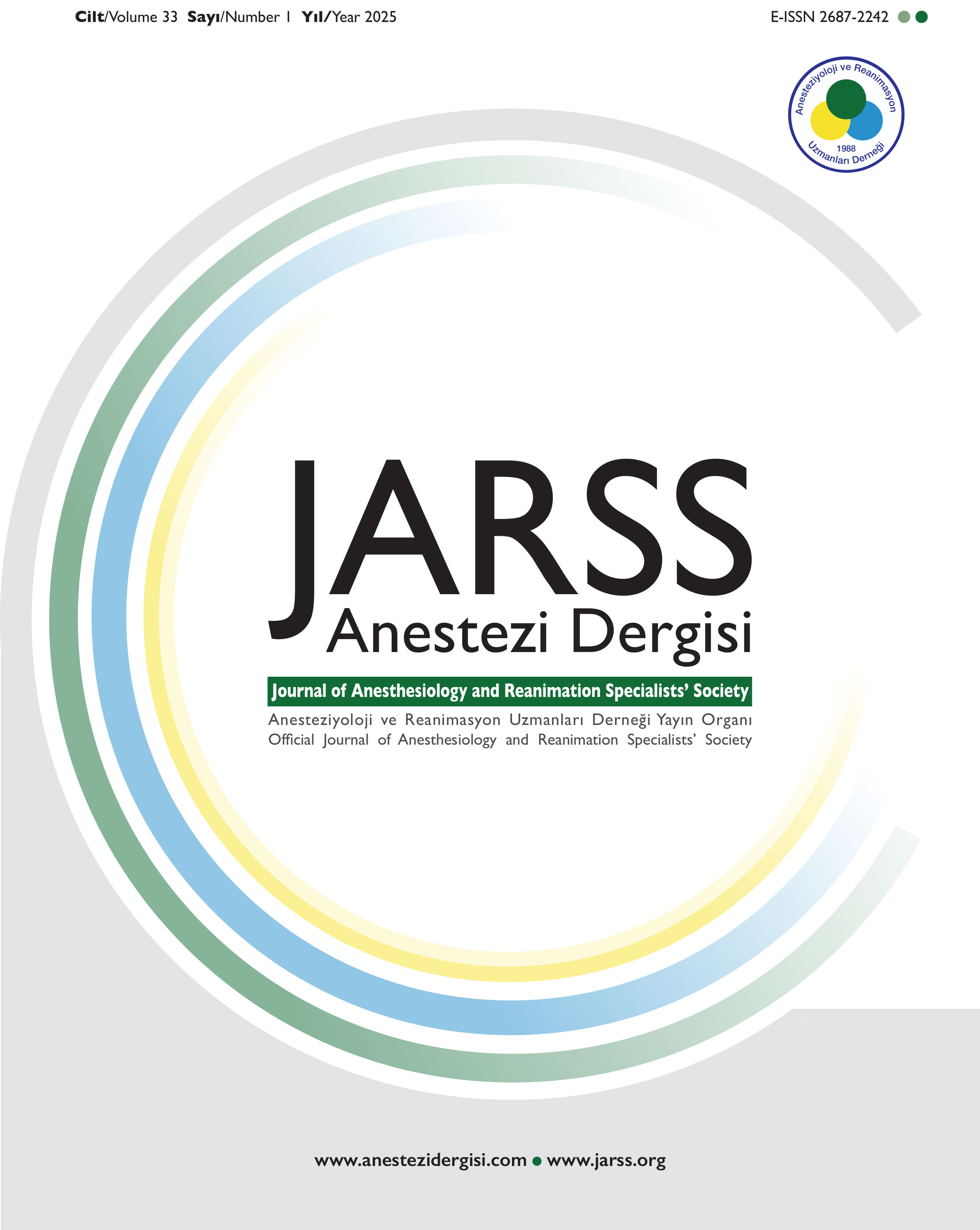The Effects of Fresh Gas Flow on Emergence Agitation for Gynecologic Surgery: A Clinical Study
Ayça Taş Tuna1, Gürkan Demir1, Havva Kocayiğit2, Ali Fuat Erdem11Sakarya University, Faculty of Medicine, Department of Anesthesiology, Sakarya, Turkey2Sakarya Training and Research Hospital, Department of Anesthesiology, Sakarya, Turkey
Objective: This prospective study aimed to determine whether low flow anesthesia (LFA) has an effect on emergence agitation in women who underwent laparotomic gynecologic surgeries.
Method: Sixty four female patients were enrolled in this prospective randomized study. The patients were randomly allocated into two groups: Group 2 and Group 0.5. The fresh gas flow (FGF) rate was set at 4 L min⁻¹ in both groups, initially. When all patients reached 1 minimum alveolar concentration of sevoflurane, the FGF rate was reduced to 2 L min⁻¹ in Group 2 and 0.5 L min⁻¹ in Group 0.5. For Group 0.5, vapor was closed 15 minutes before the end of surgery, while it was closed at the end of the operation for Group 2. At the end of the surgery, the FGF rate was increased to 4 L min⁻¹. Emergence agitation was assessed using the Riker Sedation Agitation Scale (SAS) in the post-anesthesia care unit at 5, 10, 20 and 30th minutes.
Results: Emergence agitation was observed in 5 patients, no significant difference was found between two groups. For all evaluation times, number of patients with SAS=4 was significantly higher in Group 0.5, while the number of patients with SAS<4 was significantly higher in Group 2 (p<0.05).
Conclusion: The number of patients who are calm and cooperative was higher in LFA.
Jinekolojik Cerrahide Taze Gaz Akımının Derlenme Ajitasyonu Üzerine Etkileri: Klinik Bir Çalışma
Ayça Taş Tuna1, Gürkan Demir1, Havva Kocayiğit2, Ali Fuat Erdem11Sakarya Üniversitesi, Tıp Fakültesi, Anesteziyoloji Ana Bilim Dalı, Sakarya, Türkiye2Sakarya Eğitim ve Araştırma Hastanesi, Anesteziyoloji Kliniği, Sakarya, Türkiye
Amaç: Bu prospektif çalışma laparotomik jinekolojik cerrahi geçiren hastalarda düşük akımlı anestezinin (DAA) derlenme ajitasyonu üzerine etkisi olup olmadığını tespit etmeyi amaçlamaktadır.
Yöntem: Bu prospektif randomize çalışmaya 64 hasta dahil edildi. Hastalar rastgele iki gruba ayrıldı: Grup 2 ve Grup 0,5. Taze gaz akımı (TGA) başlangıçta her iki grupta da 4 L dk⁻¹ olarak ayarlandı. Tüm hastalarda sevofluran 1 minimum alveolar konsantrasyona ulaştığında TGA Grup 2 için 2 L dk⁻¹ ve Grup 0,5 için 0,5 L dk⁻¹’ye düşürüldü. Vaporizatör Grup 2’de cerrahi bitiminde kapatılırken, Grup 0,5’te cerrahi bitmeden 15 dakika önce kapatıldı. Cerrahi bittiğinde TGA 4 L dk⁻¹’ye yükseltildi. Derlenme ajitasyonu post-anestezi bakım ünitesinde 5, 10, 20 ve 30. dakikalarda Riker sedasyon ajitasyon skalası (SAS) kullanılarak değerlendirildi.
Bulgular: Beş hastada derlenme ajitasyonu gözlendi ve gruplar arasında istatistiksel olarak derlenme ajitasyonu açısından anlamlı fark saptanmadı. Tüm değerlendirme sürelerinde SAS=4 olan hasta sayısı Grup 0,5’te anlamlı olarak daha fazla iken SAS<4 olan hasta sayısı Grup 2’de anlamlı olarak daha fazla idi (p<0,05).
Sonuç: Sakin ve koopere olan hasta sayısı DAA uygulanan hastalarda daha fazlaydı.
Manuscript Language: English
(745 downloaded)

















